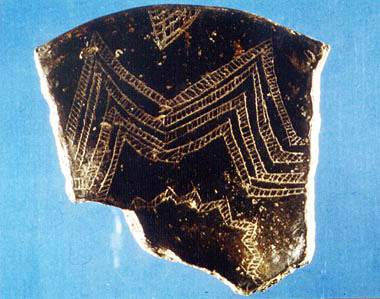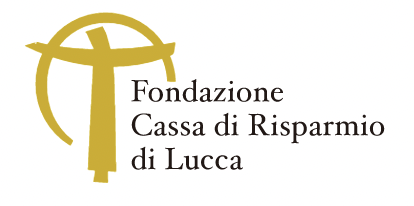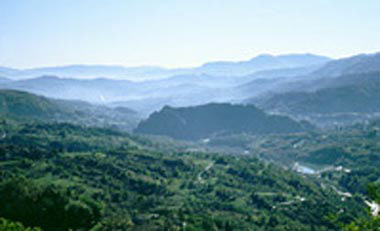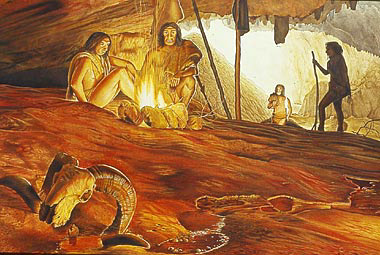
The Neolithic (or "new Stone Age"), i.e. the time when human groups started making instruments by polishing stone, is considered the most important stage in cultural evolution as it marks the period in which human communities began to directly produce their own food. The definition of the "Neolithic Revolution" highlights the importance of the agricultural discoveries and stock-breeding, which in fact occurred about 10,000 years ago in the area of the so-called "Fertile Crescent". This vast half moon-shaped area stretched from the delta of the Nile and the banks of the east Mediterranean to the valleys enclosed by the great Mesopotamian rivers, the Tigris and Euphrates and includes sections of territory in Turkey, Iran, Iraq, Jordan, Syria, Lebanon, Palestine, Israel and Egypt. There, during the former Mesolithic period, the first attempts at selecting vegetable species had already been made. And just there the neolithic groups experimented the seeding and production of cereals and pulses which grew wild in those areas (such as barley, spelt, wheat, lentils and broad beans), becoming the authors of the birth of agriculture. At the same time, or even before the beginning of the first agricultural practices, they captured more docile animals such as sheep and wild goat so as to feed and look after them in limited spaces where they could easily be checked on until they reached the point of true domestication. This practice was then extended to other animals such as pigs, cattle and horses. Some human groups who still led a nomadic or semi-nomadic way of life, then dedicated themselves exclusively to pastoral activities, taking advantage of domestic animals for their production of secondary resources such as milk, cheese and wool as well.
Instead, the primitive farmers changed from being semi-nomadic to become quite sedentary, because they had to look after their fields and wait for the harvest time: so they built the first permanent settlements. In this way Neolithic man managed to have certain food reserves at his disposal, so that hunting gradually became a complementary activity to agriculture and stock breeding. The best conserved neolithic complexes, Catal Huyuk in Turkey, Khirokitia in Cyprus and Jericho in ancient Palestine, are the most ancient agricultural centres in the world. Their dwellings were circular shaped with stone bases or small rectangular structures which were built next to each other. There were also rooms with altars dedicated to their cult and spaces with large containers for collecting grain. Everywhere, all of these structures were built using clay bricks dried in the sun, while the internal walls and floors were plastered using thick layers of clay and then painted red.
With the birth of agriculture, the need to make storage containers for agricultural products arose: although they certainly used wood and animal skin (which have not been preserved), neolithic farmers experimented in making containers in pottery, using clay to model various shapes of vessels for many different purposes.
The assured availability of food resources brought about an improvement in living conditions and an increase in population. The need to colonise new lands then arose: navigation, which had perhaps been tried previously, became a very common practice and represented a fundamental conquest for exchanging products and raw materials as well as for cultural contacts. People migrations, using simple wooden boats along the coast, allowed the exchange of various food products some of which were very sought after, like salt, and particularly useful raw materials, such as "green stones" , obsidian and steatite. There is a lot of data regarding the trading of these raw materials in the whole Mediterranean area.
First and foremost, these exchanges favoured the transmission of pottery shapes and decorations and other tools, as well as cult objects such as the extremely popular female statuettes ("Mother Goddess") connected to the fertility cult. This was the most significant artistic production in the Mediterranean area during the Neolithic period. The "rock art" became rarer as there was a preference for geometric or abstract figures. A very good example would be the paintings found on the walls of Grotta di Porto Badisco and Grotta Cosma in Puglia, where schematic representations of human and animal figures, dating back to around 6,000 years ago, are well preserved. Very beautiful representations of Neolithic animals and hunters in a naturalistic style have been preserved also on the rocks in the African and Asian deserts.
With regard to burial practices, archaeological findings provide evidence that funerary customs in the Middle-East were particularly complex and unique concerning religious rites. We know for example that between 9,000 and 8,000 years ago in the city of Jericho in Palestine, the skulls of the deceased were buried under the floor of the houses after being covered with clay so as to reproduce facial characteristics. Such a practice would suggest that there was a very real and proper "ancestors cult". In some areas, cremation also started to be practised, however this was a funerary custom that will become largely diffused during the following age of metals. In general, during the Neolithic, the bodies of the deceased were buried in a crouching position, in simple pits dug in the earth, and sometimes one was put next to the other (necropolis). The deceased were buried in or around the village with grave goods that included vessels with food provisions, axes, personal ornaments and amulets in bone and shell.
During the final phase of the Neolithic in the Middle-East regions, the use of copper was experienced with. It was the first metal to be used both in its raw state through "cold hammering" and through "melting" of minerals containing it in small percentages. However, this important technological breakthrough was passed on to western peoples, later on, during the so-called Calcolithic (or Copper Age).
From around 8,000 years ago, agriculture and stock breeding practices, together with the production of pottery vessels, carried out by the peoples of the Middle-East and North Africa, were passed on, by way of the Aegean sea and the Balkan regions, to all the western European communities who had probably already made their own attempts at food production. These technological conquests, therefore, spread to Southern Italy only around 7,300 years ago, both by sea through the Tremiti Islands, Puglia , Basilicata, Sicilia and up to Liguria, and by land also reaching the northern and central parts of the peninsula around 6,500 years ago. The European Neolithic age assumes particular cultural aspects that archaeologists have divided up into three periods, Early, Middle and Late Neolithic, based on the differences between the shape and decoration of stone vessels, instruments and tools. Archaeological data tracing back to around 5,300 years ago, in Europe, show the first signs of the use of copper, marking the beginning of Calcolithic.
Details:
In Italy, the most interesting Neolithic settlements have been preserved in the south, especially in Sicilia, Calabria, Basilicata and Puglia. In Foggia area, in particular, archaeologists discovered different villages with rectangular shaped huts which were built with roofs made from vegetal materials and sometimes with floors which have been dug below the earth's surface, these were lined with stones in order to avoid flooding. The villages were surrounded by deep wide ditches shaped like a "C" (as yet we know very little of their usefulness). There have been some finds of single graves in these ditches. Among other Italian Neolithic villages to be remembered have to be included those in the Abruzzo region (Fucino and Chieti area), the settlements along the banks of Lago di Bracciano in Lazio, where the remains of a boat were discovered, and also the settlements around the Po in Emilia Romagna, Lombardia, Veneto and Friuli. Neolithic settlements have also been found in Liguria and Trentino, situated in caves or in rock-shelters, but these are exceptions given that during the Neolithic age, caves were almost exclusively used for cult purposes and funerary rituals. Finds of underground silos, used for the preservation of food resources, ovens for cooking food and firing pottery and small stone walls without mortar marking animal boundaries have been discovered in many Italian settlements.
There are no certain archaeological data in Toscana regarding the shapes of the huts and the materials used in their construction; therefore some clay fragments, showing traces of intertwined reeds would suggest that Neolithic huts were built with walls and roofs of vegetal materials which were plastered using clay, as was done in other parts of the world. Concerning the Early Neolithic, we can presume that villages of remarkable importance and continual use existed, as the Neolithic settlements of Giglio Island, Cala Giovanna on the Pianosa Island and Pienza in the Siena area, on the basis of the abundance of pottery, lithic tools, millstones and instruments used for weaving. At Mileto near Sesto Fiorentino, large fuel pits, used for firing vessels, were found suggesting that this Neolithic community was permanent and well organised.
The Versilia area settlements of the oldest Neolithic phase are unknown, although some traces have been found around the coastal areas of Pisa, on the dunes of Coltano and Castagnolo. Some fragments of impressed pottery have also been found in Riparo della Romita at Asciano Pisano. Two settlements dating back to "linear pottery culture" have been recently discovered in the Valley of the Serchio at Muraccio and Piano di Cerreto in the municipality of Pieve Fosciana. Since these areas were not very suitable for agricultural activities, Neolithic groups probably chose them with the aim of taking advantage of the local raw materials such as flint and steatite.
The Final Neolithic period is the most documented phase, both in internal Toscana and coastal areas. The settlements which have yielded the most significant information, showing the existence of commercial links over a wide range, are those found at Neto di Bolasse in the area of Sesto Fiorentino, Podere Casanova at Pontedera, Grotta all'Onda of Camaiore, Grotta del Leone and the Riparo della Romita in Asciano Pisano.
Important technological innovations were introduced during the Neolithic period: the production of tools in polished stone, the use of loom and in particular the production of pottery.
People continued flaking flint but started to use a new technique which foresaw the polishing of the surfaces of particular stones called "green stone", using sand and water. In this way they obtained tools which were fit into wooden or bone handles, forming axes and hatchets used for deforesting. In this period Neolithic people also began to exploit obsidian so as to obtain particularly sharp and resistant instruments. Tools made using this material have been found all over the Italian peninsula, including the innermost areas, evidence of a very active trade in this precious material between the mainland and the islands. Steatite was another very sought after material during the Neolithic period, a well workable stone which was mainly used to make pieces for necklaces.
Evidence concerning the introduction of the spindle and the loom for spinning and weaving vegetal and animal fibres is testified by the findings of tools linked to the various stages of the process such as drop spindles, backed clay loom weights and loom hackles. The parts of the equipment built from wood have not been preserved. Man produced linen, hemp and wool cloth but only in very few cases these have been preserved thanks to particular environmental conditions. Anyway, in Italy we have evidence regarding the cultivation of the linen plant in the settlement of Marmotta, at Lago di Bracciano, where domestic linen seeds have been found.
Pottery was made by mixing together clay, water, grinded stone and sand. While the use of the lathe – turning spread in Italy around the Ist millennium B.C., during the Neolithic period pottery was shaped by hand applying the "Columbine" method: this consisted of the assemblage of many pieces of clay rolls, That were linked and smoothed down until the desired shape was obtained. Once the vessels had dried outside, various polishing treatments were carried out so that all the external surfaces became homogenous. The vessels were then fired in simple holes in the ground, which were lined with stones. The fire was fuelled with dried wooden branches.
In Italy, during the earliest stages of the Neolithic period, the first occurrence of "impressed ceramic" took place in the South and along the coastal areas, characterised by vessels decorated, before the firing process, with nails and fingers impressions or using the indented lip of bivalve shells and other sharp objects. Instead, in the North of Italy a cultural trend called "Linear ceramic" occurred, characterised by engraved and furrowed decoration, practised before firing, featuring simple motifs such as lines, dots or broken lines.
During the following cultural phase in Central/Southern Italy, "painted pottery" spread out, with decoration obtained using natural colouring substances, after the drying process, featured with strip motifs in shapes of grid, spirals and flames. Instead, in the North of Italy the "square-mouthed pottery culture" spread out. This name due to the characteristic shape of the mouth of the vessels, decorated with complex engraved motifs. It is important to remember also the Diana Culture in southern Italy, during the final phase of the Neolithic period, characterised by undecorated pottery, with red coral surface. The Chassey-Lagozza culture was widespread in the north (from the French area of Chassey to Lagozza in Lombardia) and its ceramic vessels were blackish, thin and shiny, featuring rare and simple graffito designs, carried out after the vessels had been fired. Much richer and more complex graffito motifs were typical of the Ozieri Culture in Sardegna.
In Toscana, the Neolithic phases of "impressed pottery", "linear pottery" and "painted pottery" are documented only from findings in the coastal areas around Pisa and Livorno, especially on the islands of the archipelago as well as in the inland areas of Garfagnana, Siena and Sesto Fiorentino. The Late Neolithic is mainly documented in north-western area of Toscana, around 5000 years ago, especially in the caves of Asciano Pisano and, in the Alta Versilia, at Grotta all'Onda of Camaiore.
An evident climatic warming took place in the Mediterranean basin and in Northern Europe during the Neolithic period, particularly between 8,000 and 5,500 years ago when temperatures were even higher than the present ones and there was heavy rainfall. This brought about a 3-4 metre rise in sea level, compared to the present one. This phenomenon therefore determined that even the Tuscan coastline was further back compared to the present shoreline, while heavy rainfalls and high temperatures favoured the formation of thick layers of stalagmite on the caves. This phenomenon was in fact present in almost all Italian caves.
The rise in temperature brought about notable changes in vegetation which was characterised by the presence of oak, ash and alder forests which developed in damp environments in the lowlands. In the coastal areas of Toscana region, the landscape interchanged from sandy beaches to lake and marshland , while the mountains in the background were covered from top to bottom in oak forest with cerris, oak, maple, chestnut, hornbeam, hazelnut, laburnum and viburnum. During the Neolithic, there was a spreading of beech trees while silver fir declined, and was only preserved at medium and low altitudes, growing near the coastal areas also. Arboreal species or shrubbery developed above 1,500 metre, leaving the mountainside bare.
Starting from the Neolithic period the human interference on the environment became greater because of the continual deforesting of huge areas, aiming to create larger fields for his agricultural activities. He also periodically set fire to the land to make it more fertile and suitable for new cultivations. The reconstruction of the Neolithic environment in Toscana is supported by new botanical studies carried out on carbon and pollen sampled during archaeological excavations, relative to both coastal and inland settlements. These data are added to both the results of studies on the submerged strata of Lago di Massaciuccoli and the geological studies along the coast strip running between Livorno and Grosseto. On the basis of data obtained from carbon and pollen samples, we know that there was a new cold climate fluctuation between 5,500 and 5,000 years ago, which gradually provoked a new sea level regression, establishing later the present day level. Around 5,000 years ago, the Tuscan landscape acquired characteristics which are still observed today.







